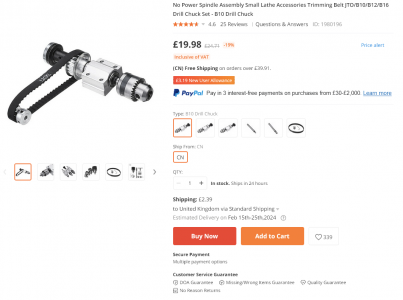You can use an online computer program called
RideTheGearTrain which you can find by entering it into a browser. This allows you to enter all the gears you own and tells you which gears to use to produce a particular pitch (or TPI). If your lathe has a gearbox you can ask the author of the program to add your gearbox to the list that is already provided. This does not cost you anything. The program actually displays a box with the maximum pitch that you can achieve.
I imagine you would choose the maximum possible pitch, and then turn a multi-start thread. That is several thread grooves (spirals) starting at different angles. e.g. for 4 spirals they would start at 0, 90,180,270 degrees apart.
The helix angle of the thread can be calculated from the pitch and the circumference of the groove. The spiral is like a triangular piece of paper wrapped around a bar. The angle of the slope on the triangle is the helix angle. I think the clearance angle on your cutting tool should be equal to or slightly greater than the helix angle.
The long side of the right triangle is equal to the circumference (Pi * D). The short side of the triangle is the pitch of the thread or spiral. The helix angle (H) is the smaller of the two angles. (the third angle is 90 degrees). Tan function is opposite over adjacent. So tan(H)=pitch / circumference.
You can use a calculator or smart phone to get the inverse tan function (sometimes written tan -1 or arcTan).
H = arcTan( pitch / circumference).
You shouldn't have much trouble grinding your own high speed steel cutting tool. It is easier than it looks, but may take a bit of trial and error. Intermittent cutting tends to break tooks, especially if you use carbide instead of high speed steel HSS, so gentle shallow cuts will be required. A motorized milling tool mounted on the tool post might be an idea alternative. See my
YouTube video channel on how to make a milling grinding attachment.
I hope this is of some help! Evan.



